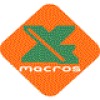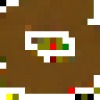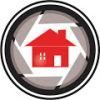CLIENTS SPEAK Read all

=>Very happy, easy to work with. Great price on site build. I…
Joel ,United States 

I have done 3 job here.with the work done i am impressed.…
Troy ,United Kingdom 

=>Techwelfare is very supportive and they provide very quick response, and also…
Mohanty ,India 

Great service, went out of their way to help. Will use again.
Steve ,United Kingdom 

Positive experience, great communication, will work with again. A++
Greg ,United States 

This is to state that Tech Welfare has completed the project for…
Jonathan Eldridge ,United States 

Great Job.. Very friendly when asked for updates a best bet solution…
Bradley ,United States 

Great work. Great communication. They made sure I was happy at every…
Thomas ,United States 

They did a fantastic job and I highly recommend them to anyone…
naijaruns ,United States 

=>very very very good service ... recommend to everybody ... they really…
semseoweb ,Canada 

Being a pleasure to work with. Will hire him again in the…
im pious ,Greece 

=>I am going to keep this simple - these guys are FANTASTIC…
Chris ,United Kingdom 

Excellent communication. Perfect completed product and very helpful. Techwelfare are a great…
Ford ,United Kingdom 

Excellent communication and support throughout the project. We will certainly be using…
R. Kaan ,United Kingdom 

Great work, Thanks
daniel ,Togo 

Fast and effective. Highly recommended.
Canndy ,Canada 

Great work...Thank you...
Nottriping ,United States 

Project Professionally handled by his team.I got excatly what I wanted. Infact,…
Mr. Ram ,India 

Very competent programmer that delivers as promised.
Rick ,United States 

TechWelfare did a fine job on this project. They had also found…
Sharp ,United States 

Quickly delivered a good looking site. Will use again.
Birwin ,Canada 

=>very good communication and open minded work. even if they do not…
gotto ,Germany 

Techwelfare did an excellent job of fixing two serious issues that were…
infinite ,New Zealand 

Good work. Happy with the design. Great communication.
Smau ,France 

Awesome programmer, great communication skills finished the project to my liking and…
Merch ,United States 

=>Techwelfare gave me everything I needed AND MORE... immediate and constant communication…
seaw ,Bermuda 

good coder, he was willing to discuss and improve all aspects of…
papix ,United States 

This company was excellent and professional...Work was completed to satisfaction. Looking forward…
Easy ci ,Nigeria 

They have completed this tricky job perfectly.
koopmann (Samba) ,Germany 

Great to work with, excellent communication. Very proactive and goes the extra…
neighbor ,United States 

Very knowledgeable programmer. Was a little late on the project but at…
Buyer kelly ,United States 

Good work. Will hire again!
epicun ,United States 

=>As always super job.Very clear communication and cooperative in all ways.A+++ programmers!!…
Sante ,Netherlands 

Once again, very happy with the great work. Very good at communicating…
Learning makes C ,United States 

Thank you so much! You guys are the best experience I have…
Smart Phone Guru ,United States 

Excellent work done by techwelfare. really pleased with end result.
Jamal ,United Kingdom 

=>Done as per request =>project completed as usual =>Project was delayed but…
Roland ,Singapore 

Good work and communication.
Auto Daddy ,United States 

Project completed
PartGod ,Japan 

Thanks. Great results
Image cartoon ,Egypt 

Unfortunately wasnt able to do requested job, but was very helpful and…
Dus ,Israel 

Pleasure to work with
Katiwa ,United States 

Great team will work with them again!
Jeff Coldwell ,United States 

=>Do not hesitate to hire Techwelfare. They are a group of talented,…
Wilson Allison ,United States 

Pleasure working with...
Chhabras ,India 

Techwelfare thank you.
Sema ,United States 

A conscientious person. Very articulated with attractive input to his web designs.…
Kingsley Dieyi ,United States 

=>Very speedy, accurate and helpful all throughout the project. Will definitely hire…
Deepinder Saini ,United States 

=>The experience was great. I could not be happier! =>Work looked great.…
Pc Plus ,United States 

THANKS FOR YOUR HARD EFFORT!!!
Veronica ,Colombia 

=>very good Ill recommend. =>Very good, may be too rigid but at…
JJnini ,France 

Good service.Thanks for the Affordable project. Great communication.
Paul ,Philippines 

Very Professional and Experienced Programmer. Delivered on time :) I will hire…
Mr Rakibul ,Bangladesh 

The project went without any problems, i recommend techwelfare for future projects.
biaggizl ,Poland 

Very good and professional freelancer.Good Work.
Frank ,Nepal 

All is ok super profesionist
Nszaby ,Romania 

WOW. Great company that does make your work for real. And they…
AKN ,Sweden 

Great work, Great communication, Great quality.. A++
Pinky ,Latvia 

Thank you, everything was made in time.
Anissa ,Czech Republic 

Techwelfare did a great job.. He worked hard and was there when…
Luis ,Portugal 

did a very good job! thanks!
Loja ,Portugal 

Puskar was amazingly helpful and considerate and helped me through each stage…
Christian Smith (Video Pages) ,South Africa 

This is a responsible and hardworking group and quite knowledgeable too. Thanks…
Dele Ojewumi (thecash) ,Nigeria 

=>An excellent service provider who I always trust to get the service…
Aziz ,Bahrain 

Good programmer did my work to my satisfaction.
Sobha ,Singapore 

I recommend them for future work. Very much cooperative.
Mr. Rakesh ,India 

They really are reliable and able. I recently had bad experiences so…
Shaqwan (anthony) ,Aruba 

Great communication, daily updates. Finished ahead of schedule.
Dare ,Australia 

Excellent Freelancer. Will assign more projects on future. Thank you very much.
Ignacio Rodés (irode) ,Spain 

=> Will certainly hire again for similar projects. => Techwelfare was excellent…
Roger ,Barbados 

=>Very good programmer, easy to deal with =>2nd project with him, very…
vanlines empire ,Canada 

A good quality job as usual. AA++
CDPD GROUP ,United States 

Puskar and his professional team is great. I was a very demanding…
Harmi ,Canada 

The project was delivered as requested. 5 Stars.
Apccorp ,Canada 

Project Professionally handled by his team.I got exactly what I wanted. In…
Mart World ,Canada 

It was really pleasure and honor to work with this team. Very…
Paul Firm ,Canada 

=>Excellent. Highly recommended. =>As expected, excellent work and highly responsive (plus very…
jimqt ,United Kingdom 

Great to work with Techwelfare.. Changes suggested made within no time.. A…
krsh haris ,United Kingdom 

Fantastic service all round, would definitely recommend working with TechWelfare. A+++
JosephKL01 ,United Kingdom 

OK job done.
SmallJobs ,Australia 

=>Good work. =>Great job i will definitely rehire these guys.
Jeffrey ,Germany 

From the ground well communication and programming.
Tobias conrad ,Germany 

Excellent work,very trusted programmer,sure i will hire him again,thank you.
Quad sites ,Italy 

very professional service provider. the service provider has gone a step further…
Online Buddy ,India 

Excellent work done by techwelfare. Thanks for the help.
Prashu shinde ,India 

Great Coder...
Aviity ,India 

They did a fantastic job and I highly recommend them to anyone…
Naijaruns ,United States 

Highly suggest that you hire this group if you need PHP programming…
Bob jensen (Black Friday Auction) ,United States 

very knowledgeable about the project
George Websites ,United States 

Good developer. Gets the job done, and gets it done fast! A+++++
Mrnyc1979 ,United States 

=>Techwelfare provided a very professional service.The quality and speed of the work…
Scott (homecctv) ,United Kingdom 

It is a good team even though you have to get really…
Homond ,United Kingdom 

Good guys to work with, good communications and fixed all my problems…
Pip69 ,United Kingdom 

=>Excellent work so far!!! =>Great experience! These guys are highly talented and…
Kevin Cambridge ,United States 

Great job done even though no source codes and files available.
Alice ,Malaysia 

Very good in all points. Nice jobs. Happy to work with Techwellfare…
Cinquante ,France 

Very fast and easy to communicate with! All the points were not…
Mauma ,United States 

We are happy with techwelfare work, We would like to keep long…
Alim Alayubahmed ,Bangladesh 

Great work, thank you!
Kosta Hanna ,Australia 

Great work. I will work with him again.
Papon ,Bangladesh 

Excellent Freelancer, finish on time and also when misunderstood me offered me…
Chpox ,Argentina 

Techwelfare was good with communication and always available. They were open with…
Shrins4u ,India 

The project was done to specification and is now working on my…
Kenja ,United States 

Thank you for the great job
teodor ,Bulgaria 

Great Work Will Continue to work with.
Mystic ,United States 

Great team , helped me till end thanx guys.
hirton ,Sweden 

Excellent work and good comms, freelancer is always available on chat. Good…
Engage ,South Africa 

My request was not easy, they did it perfectly and in the…
Majdi ,Saudi Arabia 

Will hire again. Excellent communication and attention.
Scarcius ,United States 

Excellent work. Recommended!
Kanope ,France 

Professional communication, transparent whenever a problem arises and strongly recommended for other…
Ymohi ,Egypt 

The team did an thorough job and I plan on hiring them…
XI ,United States 

Gerat job and great freelancer. The project was handled exactly when expected…
NituAl3x ,Romania 

I am very happy to deal with you, they do exactly what…
tarekhamed ,Egypt 

Great guys, efficient. They did a good job for me, you will…
Vw ,Kenya 

Great communication.
Dqrebel ,Argentina 

Im glad that I found so competent, reliable and trustful people in…
nalim ,Slovakia (Slovak Republic) .png)

I enjoyed working with Techwelfare.
onajite ,Nigeria 

The best team for building websites! Very hardworking people and they take…
instantpay ,Cameroon 

best developers team,. I had wordpress task and they proved themselves to…
ExpertHelper ,United States 

They got the work done quick and correctly. Will work with them…
Petersen ,Denmark 

Great job bit longer that I expected.
Graziano ,Ireland 

Very helpful throughout..
Colmflanag ,Ireland 

Fantastic. Very pleased! Will certainly rehire
Nathan ,Australia 

Always there when there was issues. They did an outstanding job. I…
Dlrd ,United States 

Work exactly as expected, understood my small problems without any issues.
Jdm ,Norway 

Good work from techwelfare.The price was reasonable.They manage to finish the job…
Syafeena ,Malaysia 

VERY GOOD WORK DONE. WILL HIRE AGAIN.
jeovenel ,Ghana 

U can hire them for ur projects
itsmeguru ,Singapore 

Great company to work with
tomviguur ,Netherlands 

Good service , project done as i wanted
tahaouarra ,Morocco 

Excellent results. I am satisfied with his works.
kkumedec ,Korea, Republic of 

They are good and committed, working with them for more than a…
expertvilla ,United States 
QUICK CONTACT
Address:
4/4 Jogendra Basak Road,Krishna Apartment, Flat No- G3, Ground Floor,Kolkata-700036.
-
Phone:
+91-9163850549
+91-9433134549
+91-9830125669 -
Email:
puskar.maji@gmail.com
techwelfare@hotmail.com
info@techwelfare.com



